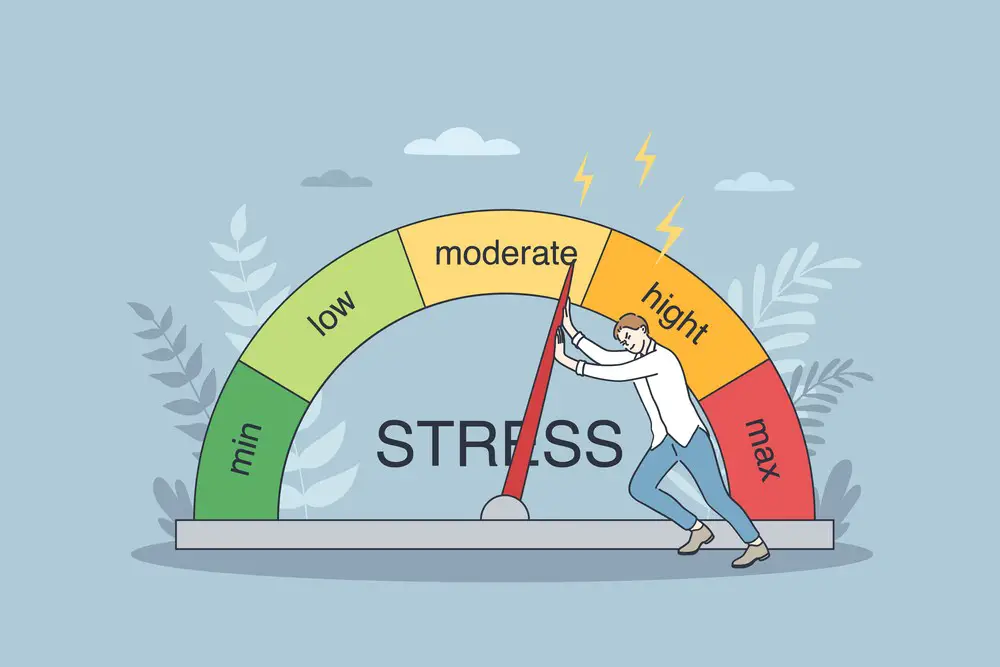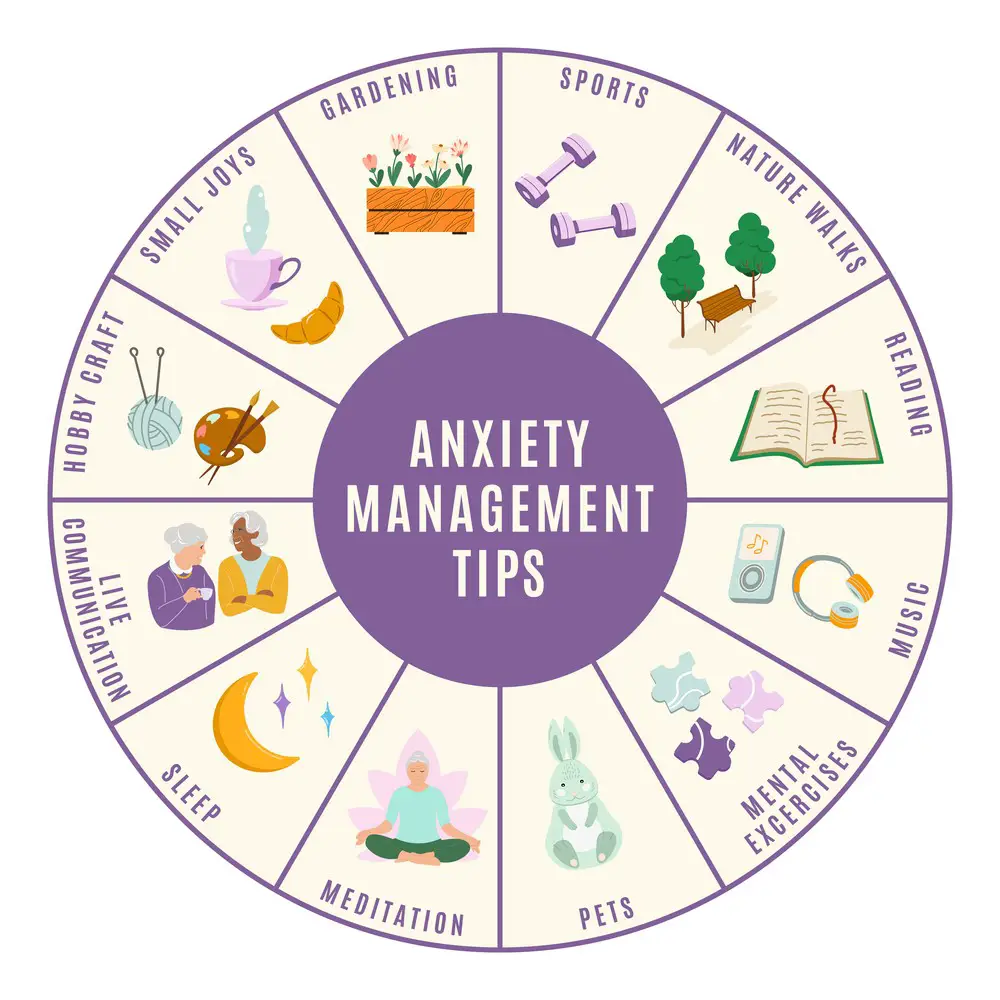As a BetterHelp affiliate, we receive compensation from BetterHelp if you purchase products or services through the links provided
Walk therapy, a growing trend in the mental health field combines the therapeutic benefits of physical activity with traditional talk therapy. Walking therapy provides a unique and refreshing approach to psychological counseling by conducting sessions outdoors while clients and therapists walk together. As the popularity of this approach increases, mental health professionals and clients are discovering the numerous advantages of walk therapy.
The concept of walk therapy stems from the understanding that physical activity and mental well-being are profoundly connected. Regular exercise, such as walking, has been scientifically proven to alleviate stress, anxiety, and symptoms of depression while promoting overall psychological health. Additionally, being surrounded by nature during the sessions can play a vital role in reducing stress levels, which allows individuals to focus more effectively on their thoughts and emotions. Clients are encouraged to explore and confront their feelings as they walk and talk, while therapists provide valuable guidance and support.
Furthermore, walk therapy offers a less formal environment than traditional therapy settings, helping individuals feel more at ease and open to discussing their struggles. This approach encourages clients to embrace healthier habits while using their time in nature to reflect on their current life situation and develop coping strategies.
Key Takeaways
- Walk therapy combines physical activity and traditional talk therapy, providing a unique approach to mental health counseling.
- Regular exercise and exposure to nature during walk therapy sessions can alleviate stress and improve overall psychological health.
- The less formal environment of walk therapy helps clients feel more at ease and encourages healthier habits.
 Understanding Walk Therapy
Understanding Walk Therapy
History and Development
Walk therapy, also known as walking therapy, has been gaining popularity as an alternative to traditional psychotherapy. The concept of walk therapy is not new; it dates back to ancient philosophers like Aristotle, who believed that walking could stimulate intellectual thought.
The American Psychological Association (APA) has acknowledged walk therapy’s physical and mental health benefits. Several studies have been conducted to assess the effectiveness of walk therapy in comparison to traditional psychotherapy. Research has shown that walking therapy can equally address various mental health concerns.
Concepts and Principles
Walk therapy is grounded in the belief that physical activity and exposure to nature can enhance the benefits of traditional therapy. In walking therapy sessions, clients and therapists converse while walking outdoors. Sessions can occur in various settings, such as parks, trails, and urban areas.
Some of the key principles of walk therapy include:
- Holistic approach: Walk therapy addresses the mind and body, targeting the connection between mental and physical health.
- Natural environment: Exposure to natural surroundings can have calming effects and help clients feel more relaxed during sessions.
- Physical activity: Engaging in physical activity, such as walking, has been shown to alleviate symptoms of anxiety and depression.
Walk therapy does not aim to replace traditional psychotherapy but instead serves as a complement. Clients may still benefit from traditional therapy techniques, such as cognitive-behavioral or psychodynamic therapy while incorporating the therapeutic benefits of walking and exposure to nature.

Benefits of Walk Therapy
Physical Health Advantages
Walk therapy provides numerous physical health benefits. As a low-impact exercise, walking aids in weight management, reducing the risk of obesity-related conditions. It also improves cardiovascular health, increasing endurance and strengthening the heart. Furthermore, walk therapy promotes better posture, flexibility, and coordination, enhancing overall physical well-being. Regular walking has been shown to:
- Lower risk of heart disease and stroke
- Reduce blood pressure
- Improve management of diabetes
- Strengthen bones and joints
- Increase muscle strength and flexibility
Mental Health Advantages
Walk therapy can significantly impact mental health. The healing power of nature, combined with light exercise, offers a natural remedy for stress, anxiety, and depression. Regular walks in natural settings encourage mindfulness, leading to greater self-awareness and mental clarity. As a result, walk therapy can boost overall mental well-being, providing:
- Relief from stress and anxiety
- Improved symptoms of depression
- Enhanced cognitive function and memory
- Greater self-esteem and confidence
- Reduced feelings of loneliness and isolation
 Boost to Emotional Health
Boost to Emotional Health
Emotional health is another critical aspect of overall well-being that walk therapy can positively influence. During walk therapy sessions, individuals can process their emotions in a supportive and nurturing environment. This practice promotes emotional healing and resilience, fostering:
- Improved emotional awareness and recognition
- Better coping mechanisms and emotional regulation
- Enhanced communication and interpersonal relationships
- A stronger sense of connectedness with others and the natural world
In summary, walk therapy covers various aspects of health, including physical, mental, and emotional well-being. By incorporating this practice into one’s routine, individuals can experience holistic health benefits and enjoy a more balanced, fulfilling lifestyle.
Walk Therapy and Nature
Links Between Nature and Psychology
There is a strong connection between nature and psychology. Spending time outdoors, surrounded by greenery, trees, and flowers, has significantly benefited my mental well-being. This has led to therapeutic practices like forest bathing, which involves immersing oneself in a natural environment to experience its calming effects.
Incorporating nature into walk therapy can have numerous benefits as well. For instance, walking in a garden or among foliage can facilitate relaxation and serenity, aiding the therapeutic process. Additionally, exposure to natural spaces can trigger positive hormonal responses, ultimately leading to reduced stress, improved mood, and increased cognition.
The Role of Nature in Walk Therapy
Integrating nature into walk therapy enhances the benefits of walking as a form of physical activity. Walking in a natural setting, such as a park or trail, can amplify the therapeutic outcomes of the session. By engaging all senses during the walk, the individual becomes more in tune with their surroundings and can experience increased mindfulness and mental clarity.
Incorporating natural elements like trees, flowers, and gardens into walk therapy sessions offers a multi-faceted approach to addressing psychological concerns. By combining the physical and psychological benefits of being outdoors with the established therapeutic value of walking, walking therapy in nature becomes a profoundly effective and versatile intervention.
Process of Walk Therapy
Initial Steps
Before beginning a walk therapy session, the therapist and client mutually decide on a suitable path or route for their walk. When planning the route, it is essential to consider factors such as distance, terrain, and potential distractions. Privacy and the client’s comfort should be considered to ensure a successful walk-and-talk therapy session.
Before the session, the therapist may provide guidelines or recommendations for appropriate attire. Clients should dress comfortably and wear suitable footwear for walking. The therapist must ensure they create a safe and comfortable environment for their clients throughout the process.
During the Therapy Walk
During the walk-and-talk therapy session, the therapist and client converse while walking alongside each other. This movement encourages the client to simultaneously engage their mind and body, fostering a holistic therapeutic experience. The rhythm of walking can aid in the development of new insights and perspectives.
As the session progresses, the therapist may focus on specific conversation areas or explore broader topics, depending on the client’s needs and objectives. While maintaining a neutral and clear tone, the therapist should closely observe the client’s body language, emotional state, and overall well-being. They may adjust the pace or direction of the walk accordingly, ensuring that the client remains at ease.
Concluding the Session
Towards the end of the walk-and-talk therapy session, the therapist may gradually steer the conversation toward reflection or goal-setting. This practice assists clients in processing their insights and emotions from the session and creates a space to discuss potential action steps.
After returning to their initial location, the therapist and client may take a moment to summarize the session’s outcomes. The therapist should encourage the client to express feedback or concerns about the process. Moving forward, both parties can utilize this information to adapt or improve future walk therapy sessions, optimizing the experience for the client’s benefit.
Walk Therapy and Technology
Adapting to Virtual Sessions
During the COVID-19 pandemic, walk therapy professionals had to adapt their approach and integrate technology to continue supporting clients. Digital tools and computers helped therapists connect with clients via video call sessions to maintain a safe distance.
Walk therapy sessions also had to be adjusted, with therapists guiding the clients as they walked in their surroundings, such as a park or around their neighborhood. This allowed clients to continue walking therapy while adhering to social distancing guidelines.
For some clients, virtual sessions were the only option to continue their walk therapy, given the restrictions on movement and travel. This also presented new career opportunities and expanded the reach of therapists across different regions.
The Role of Technology in Walk Therapy
Technology has played a significant role in the evolution of walk therapy. Wearable devices such as fitness trackers and smartwatches enable therapists and clients to measure aspects like distance, heart rate, and step count, providing valuable data for analysis and customizing the therapy.
Another crucial advantage of technology in walk therapy is the accessibility of mental health apps and online resources. These tools allow clients to maintain a sense of routine along with their walk therapy sessions, as they can track their progress, schedule sessions, receive reminders, and even access guided exercises on their devices.
Moreover, technology has also led to knowledge sharing among walk therapy professionals. They can stay informed about the latest research and techniques in their field, allowing them to continually improve their knowledge and skills.
In summary, technology has been vital in shaping the way walk therapy is conducted and has helped professionals and clients adapt to changes and continue receiving crucial support during challenging times.
 Psychological Aspects of Walk Therapy
Psychological Aspects of Walk Therapy
Managing Stress and Anxiety
Walk therapy can be a beneficial tool for managing stress and anxiety. When therapists and clients engage in physical activity during sessions, the body releases endorphins, natural stress and anxiety reducers. This release of endorphins, paired with the soothing effects of being outdoors, can make it easier for clients to open up about their emotions. Furthermore, walking with a therapist allows for a less confrontational and more relaxed therapeutic environment, making it easier to discuss difficult subjects.
Dealing with Depression
In addition to helping manage stress and anxiety, walk therapy is effective in alleviating symptoms of depression. Combining physical activity, fresh air, and sunlight can positively impact a client’s mood and overall outlook. Engaging in walk therapy also provides an opportunity for social interaction. It encourages clients to stay connected with others, which can reduce the isolation and loneliness often associated with depression.
Ensuring Confidentiality
Confidentiality is a key component of the therapist-client relationship and must be maintained during walk therapy sessions. Therapists are expected to follow the same ethical guidelines and privacy protocols as in a traditional therapy setting. To maintain confidentiality, therapists may opt for quieter walking trails or more private settings, ensuring that sensitive conversations remain between them and their clients.
However, it is important to note that while walk therapy may provide various psychological benefits, it should not be considered a replacement for traditional psychotherapy in severe cases of anxiety, depression, or other mental health disorders. Instead, it can be integrated into one’s overall treatment plan as a supplemental activity for ongoing emotional well-being.
Expanding the Field: Related Therapies
Exploring Wilderness Therapy
Wilderness therapy is a form of outdoor therapy that incorporates therapeutic interventions in natural settings. It is a holistic approach designed to address various issues such as mental health, emotional well-being, and personal development. Participants engage in activities like hiking, camping, and team-building exercises combined with individual and group therapy sessions.
The collaborative and experiential learning environment in wilderness therapy helps individuals connect with nature, enhance self-awareness, and develop coping skills. It is particularly helpful for those dealing with substance abuse, emotional and behavioral issues, and trauma.
Sensory Integration in Walk Therapy
Walk therapy, another outdoor therapy, incorporates sensory integration techniques to stimulate and engage the individual’s senses. Sensory integration is how the brain organizes and interprets sensory information to produce appropriate responses to the environment.
During walk therapy sessions, individuals are encouraged to pay close attention to the sights, sounds, smells, textures, and tastes they encounter while walking. This mindfulness practice enhances the therapeutic experience by enabling clients to be fully present in their surroundings and allows them to process and regulate their emotions more effectively.
Benefits of sensory integration in walk therapy:
- Improved focus and attention
- Enhanced emotional regulation
- Increased self-awareness
- Greater connection to the environment
Incorporating sensory integration techniques in walk therapy promotes mental and emotional well-being. It helps individuals develop stronger connections with nature, which can have lasting benefits for their overall health and wellness.
Frequently Asked Questions
What are the benefits of walk-and-talk therapy?
Walk-and-talk therapy combines the benefits of physical activity and traditional psychotherapy. It can help improve mental well-being, reduce anxiety and depression, and boost self-esteem. Additionally, outdoors can help clients feel more relaxed, fostering better communication and providing a less intimidating atmosphere than in traditional office settings.
Does insurance cover walk-and-talk therapy?
Coverage for walk-and-talk therapy varies depending on individual insurance policies and the therapist’s credentials. It is essential to contact your insurance provider before starting therapy to confirm coverage and any necessary documentation needed.
How is walking therapy helpful for the elderly?
Walking therapy can be beneficial for elderly individuals as it incorporates low-impact physical activity, which can enhance cognitive function and improve cardiovascular health, along with addressing mental health concerns. The outdoor environment can also alleviate isolation and provide social engagement opportunities.
What research supports walk-and-talk therapy?
Several studies demonstrate the positive effects of walk-and-talk therapy, especially in improving mood and mental well-being. Research has found that combining physical activity with therapy can help reduce symptoms of depression and anxiety while enhancing cognitive function.
What is the consent process for walk-and-talk therapy?
The consent process for walk-and-talk therapy is similar to that of traditional therapy. Before beginning treatment, clients must sign a consent form acknowledging their willingness to participate and understanding of the risks and benefits involved. This should also include information about confidentiality, fees, insurance, and emergency procedures.
What are the ethical considerations in walk-and-talk therapy?
Ethical considerations for walk-and-talk therapy include maintaining confidentiality, ensuring client safety, and managing the therapeutic relationship outdoors. Therapists must be aware of the surroundings and potential hazards and take precautions to protect client privacy. Clients should also be informed of potential risks and provided with alternative therapy options if needed.
Jacob Maslow, a staunch advocate for mental health, delves into the transformative power of walk therapy in his new article. Navigating his mental health journey, Jacob relies on Lexapro and has benefited immensely from traditional therapy sessions over the years. Personal challenges, including a strenuous relationship with an ex-partner displaying severe narcissistic tendencies, have made Jacob’s advocacy deeply personal. While grappling with these issues, Jacob discovered solace in daily extended walks, an activity that now holds profound therapeutic value for him. Through his writing, he aspires to enlighten and assist others faced with mental health concerns and the complexities of dealing with narcissistic individuals. His legal platform is an additional resource, guiding those ensnared in complex custody disputes and co-parenting challenges.
- Breaking the Silence: Why Men’s Mental Health Matters More Than Ever - April 15, 2025
- How to Transform a Home’s Patio Space into a Relaxing Space - March 23, 2025
- 5 Strategies to Use a Cell Phone to Help Manage Your Stress - March 23, 2025
This site contains affiliate links to products. We will receive a commission for purchases made through these links.


 Understanding Walk Therapy
Understanding Walk Therapy Boost to Emotional Health
Boost to Emotional Health Psychological Aspects of Walk Therapy
Psychological Aspects of Walk Therapy
